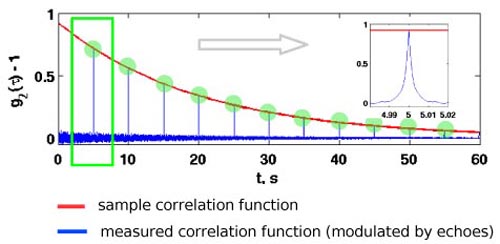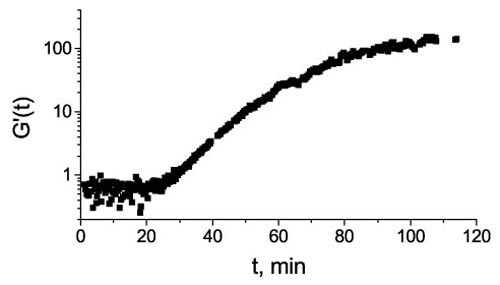Light scattering technique reveals properties of soft solids
Dynamic light-scattering techniques are used for studying the microscopic movement of small particles. Recently, there has been surge of interest in particle movement in slowly-relaxing and arrested colloidal systems such as gels or glasses. Light scattering is an excellent method for studying these materials because the technique offers convenient access to microscopic properties such as diffusion coefficients. Also, the accuracy of remote optical sensing makes light scattering one of the most valuable tools for optical characterization and monitoring. In many cases, we can even use optical measurements to predict bulk properties such as elasticity and flow by using a popular approach known as optical microrheology.1
When, however, the particle motion is microscopically restricted—as it is in gels, pastes, or glassy materials—then traditional approaches fail because these techniques are based on a time-averaging analysis of intensity fluctuations. Scattered light is normally detected in a single mode (speckle). Such measurements don't work for soft solids because the ergodicity assumption—that the time average is the same as the ensemble average—is violated.
In order to achieve proper ensemble averaging, one must monitor fluctuations from the several independent sample configurations or different scattering geometries. This can be achieved by displacing the sample mechanically or by using an area detector. The latter approach is called multi-speckle detection. One way to obtain multi-speckle averaging is to measure fluctuations in the different points in space using a CCD or CMOS camera. These devices are usually expensive, however, and suffer from limited dynamic range and time resolution. Furthermore, they require tedious configuration and alignment.
A new method suggested by our approach scrambles the incident beam into many optical modes using a spinning ground-glass disk.2–5 By spinning the disk rapidly, we can explore many optical configurations while still using a single-mode fiber, as is done in the traditional approach.
By rotating the ground glass, we change the illumination geometry (see Figure 1). During one revolution, we explore many independent scattering geometries, providing statistically-independent speckles. Thus the procedure of time averaging becomes essentially identical to ensemble averaging. The resulting light-intensity correlation function is modulated by sharp peaks (see Figure 2). These peaks are separated by the time it takes the motor to complete a rotation. The first correlation peak corresponds to the first return of the ground glass to its initial position: we call this the first echo. The second peak, or second echo, occurs after two revolutions and so on. With a solid sample, the peak height of the echoes would be constant, but with liquids and soft solids, the peak height decays. In contrast to the deterministic motion of the ground-glass disk, the motion of particles is a stochastic process leading to a continuous decay.


As a typical example of a soft solid, we studied the dynamics of a gelatin solution. The commercial food-grade gelatin was 4% by weight of a water-based solution. We added 720nm-diameter polystyrene tracer particles until it reached a final concentration of 1% by weight.2,3 The elastic properties of such gelling biopolymer solutions are of wide interest in food science, and our method allows us to calculate the elastic modulus from the echo data. In our experiment, the gelatin solution filled a 2mm-path-length glass cell. Before the measurement, we heated the sample to approximately 60°C, well above the melting point, and subsequently kept it at 22±0.1°C during the experiment. Figure 3 shows how the elastic modulus increases over time. We recorded the data with a resolution of 0.1s.
Our results2,3 show that scrambling a high-quality laser beam with a ground glass can provide an improved light source for dynamic light-scattering experiments in the multiple scattering regime. Our echo-based multi-speckle technique allows measurements of soft solids in real time without any significant time averaging. For fluid-but-slowly-relaxing samples, the time of measurement can be reduced by three to four orders of magnitude. This opens new possibilities for the study of various soft solids or slowly-evolving systems.




